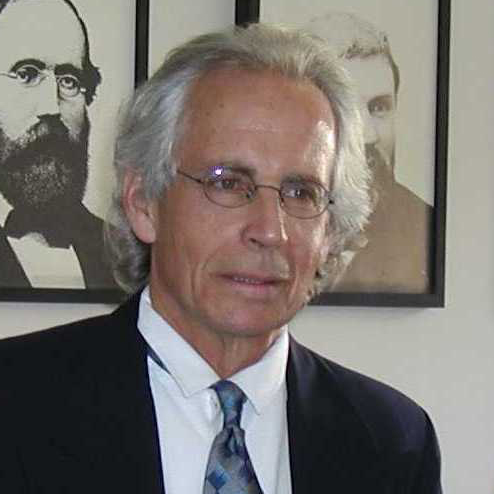"We develop algorithms that other people create something useful from."

Prof. Osher, with your level set method you have proved over the past few years that mathematics is not a purely theoretical science, but highly relevant to practical life. You use the method to describe mathematically moving areas three-dimensionally. Geographers use the method to identify where earthquakes originate. Doctors use it to predict the growth of tumours. And film studios such as Pixar or Dreamworks use it for the animation of water, snow or fire. What do all these applications have to do with mathematics?
Stanley Osher: Quite a lot, actually. The basis for many of the applications of level set methods is physics. Other applications are input by the user. For animations created in a Hollywood studio, for example, it’s all about how exactly water flows, ice melts or fire burns. By using the level set method, shapes and movements can be computed very accurately and realistically and, as a result, animated so. You can see it in the Disney film “Frozen”: ice, snow or water move in accordance with real physics. An earlier PhD student of mine, Ronald Fedkiw, won two Oscars for his animation work, and his student, Joseph Teran, animated the snow in “Frozen”. The water in the film “Titanic”, on the other hand, doesn’t have much to do with its real movement. For us mathematicians the animation at that time was already out of date. Personally, I’m not much involved in Hollywood projects anymore. I’m an algorithms guy, I look after the basic methods – and in any case I’m too old to do any programming. My very talented undergraduates and PhD students take care of that.
There is a very wide range of applications for your level set method. Did you ever expect so many different areas to be interested in your work?
No, we were lucky. The method seemed to be useful for more applications than we could have imagined. Nowadays, the level set method is standard, and hardly anyone approaches us now to ask for help. We busy ourselves with new mathematical problems. For example, a while ago I developed a method in collaboration with Leonid Rudin from the California Institute of Technology for making blurred pictures sharply focused. This method, too, has been used in a lot of applications. The police, for example, use it to catch criminals by zooming in on extracts from videos and removing any blurred, unclear parts.
Martin Burger, who is Professor of Applied Mathematics at Münster University, is also working on making images more sharply focused. His speciality is medical imaging. As part of the Cells-in-Motion Cluster of Excellence he and his research group and some physicians are looking for ways of making MRI images as clear as possible. How much does your work have in common with his?
Actually, we work together – after all, we are dealing with the same mathematical problems. Martin’s doing some great work that I find very interesting. He’s more engaged on computational imaging in the fields of anatomy and biology. Our research goes in rather a different direction. Our aim is to make MRI imaging processes faster. Using our technology and our algorithm, doctors need to record fewer data to create an image that is just as clear as in the past. This means that patients needn’t spend so much time lying in the MRI scanner or be poisoned by radiation in CT scans.
And what scientific project are you working on right now?
We have only just recently published our control theory paper under the title “Overcoming the Curse of Dimensionality“. Our algorithm simplifies problems with several dimensions and as a result it finds solutions very fast. For example, we can compute how to prevent aeroplanes coming too close to each other within the airspace. They could move in all possible directions. The algorithm can handle such a large number of parameters and find a solution. In the past, calculations involving so many variables took too long and couldn’t be used in practice. Our algorithm even functions when a hundred different parameters describe a problem. I’ll be interested to see what applications other people find for our algorithm. I think it’s great to see our mathematical methods attracting such interest. We develop algorithms that other people create something useful from. That’s something that interests me very much.

